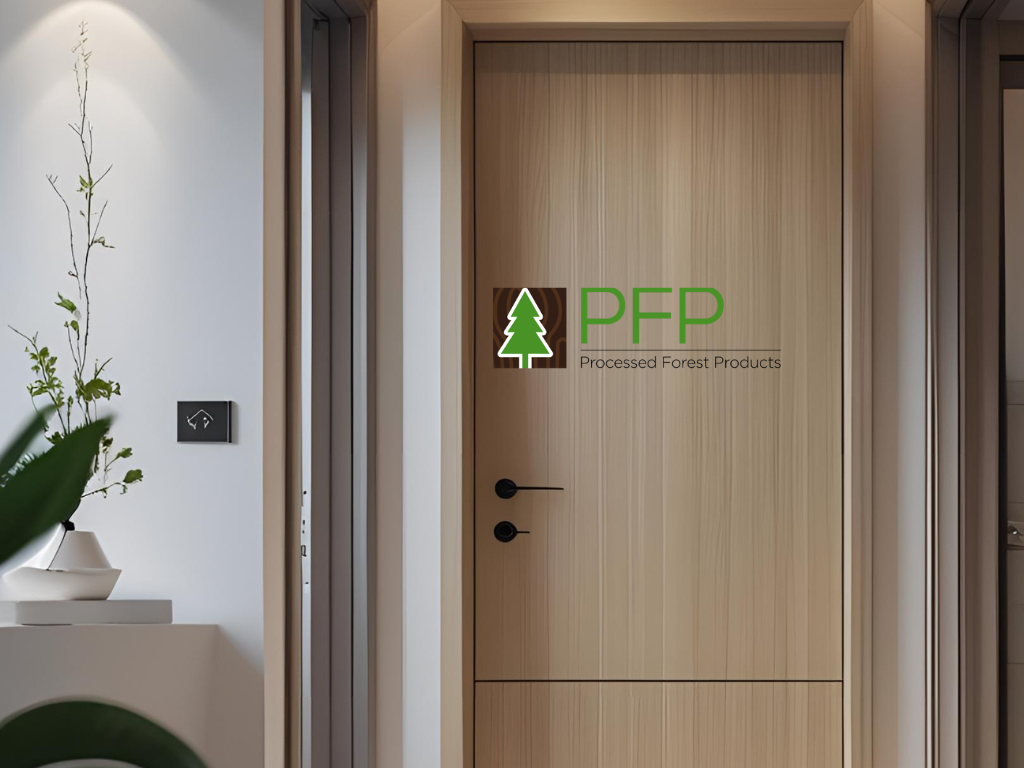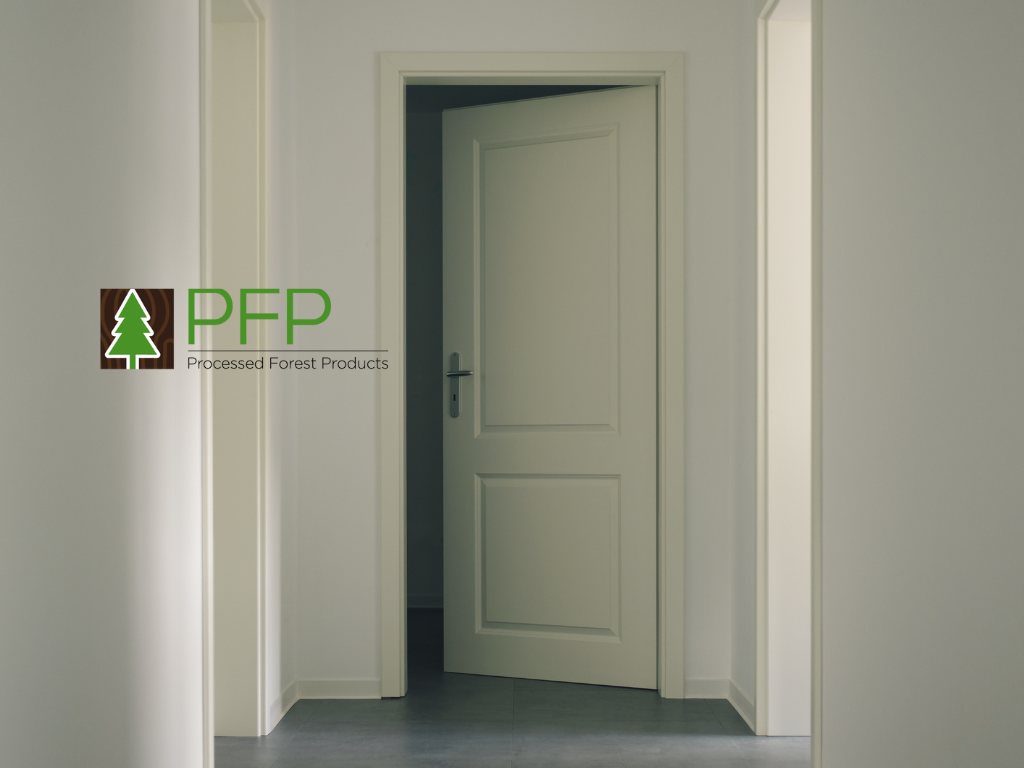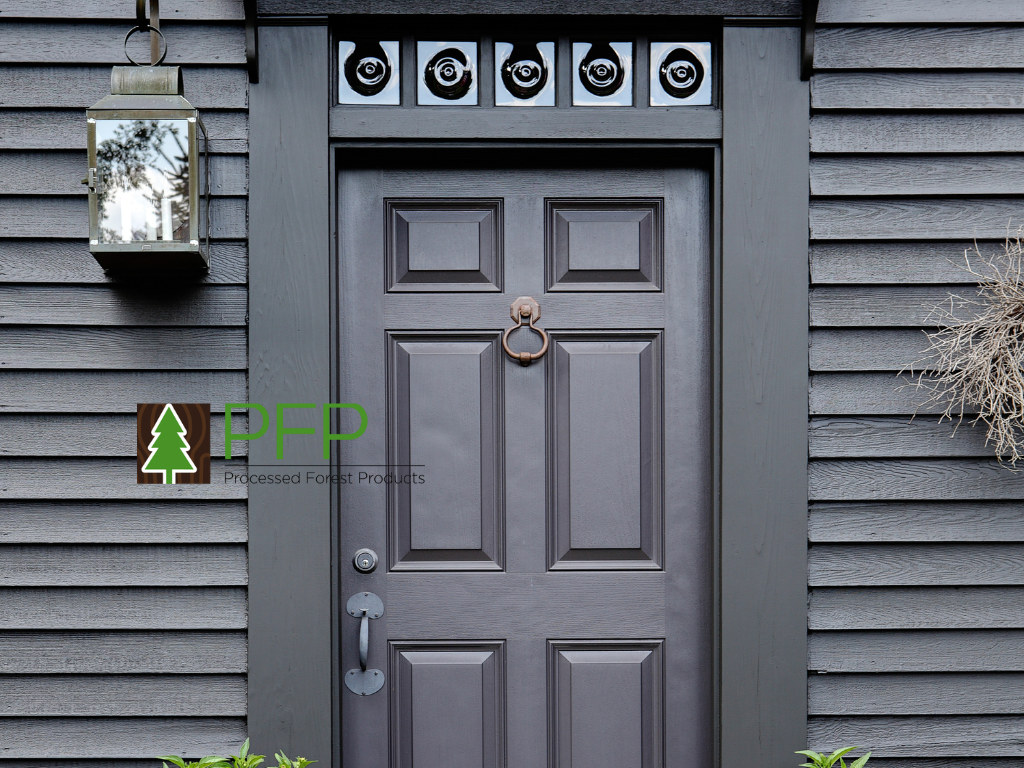A veneer door is a door made with a thin slice of natural wood—called a veneer—attached to a core material like solid wood, MDF, or particle board. This outer layer gives the door the look of real timber, but at a lower cost and with less wood used. Because of this, a veneer door offers a stylish and eco-friendly alternative to solid timber doors.
The beauty of a veneer door is in its natural grain. Each piece is slightly different, giving every door a unique and warm appearance. This makes it ideal for people who want a real-wood feel in their home or office without paying the high price of solid wood. Veneer doors are common in modern homes and are also often used in offices, hotels, and other spaces where design matters.
How Veneer and Laminate Are Made
While a veneer door uses real wood on the surface, laminate doors are made with a printed design layer that looks like wood but isn’t. Laminate is synthetic and made by pressing together layers of paper or plastic resin over a base material. The result is a tough, uniform finish that can mimic many patterns, including timber.
One of the key differences is that veneer is a natural material and laminate is not. This affects how they look, feel, and wear over time. Veneers age with character and show real grain lines. Laminates stay the same but can feel more artificial. Veneer also allows you to stain or finish the surface, while laminate doors come pre-finished and cannot be altered easily.
So, when deciding between the two, think about whether you prefer the look and feel of real wood or want something that’s consistent and low-maintenance. A veneer door is the way to go if you want a natural, warm finish that adds character to your space.
Which Is More Durable: veneer door or Laminate?
Everyday Wear and Tear
When it comes to daily use, both veneer and laminate doors hold up well—but in different ways. A veneer door is strong and sturdy, but because the surface is real wood, it can scratch or dent more easily than laminate. That said, minor marks can often be repaired or polished out.
Laminate doors, on the other hand, are made with synthetic materials. This gives them extra resistance to scratches, stains, and moisture. For spaces where knocks and bumps happen often—like kitchens or kids’ rooms—laminate may offer more resilience.
Long-Term Use in Homes and Offices
In busy homes or offices, how long a door lasts depends on its quality and how it’s treated. A good-quality veneer door, when properly cared for, can last for many years. Its solid build and natural look tend to age well with time.
Laminate doors often last long too, but their surface can’t be refinished. Once the surface wears out or gets damaged, it usually needs replacing. So while laminate might be tougher short term, veneer doors may offer longer-lasting value if well maintained.
How Do They Compare in Fire Safety?

Can a veneer door Be Made with fire rated board?
Yes, a veneer door can absolutely be built using a fire rated board. This means the inside core is specially made to resist fire for a set amount of time—often 30 or 60 minutes. These doors are tested and rated for safety, making them a good option for places that require fire resistance.
The veneer layer is simply the finish, and it doesn’t affect the core’s fire resistance. This allows you to enjoy the warm, natural look of wood without compromising on safety.
Are Laminate Doors Safe for commercial and residential fire doors?
Laminate doors can also be made with fire-rated cores. However, they may not always meet the same visual and texture standards expected in homes or high-end interiors. In commercial and residential fire doors, functionality comes first, but many people still prefer the natural look that a veneer door provides.
So if you need both style and fire safety, a fire-rated veneer door might be your best bet.
Which Looks Better in Modern Interiors?
Style Options with sustainable veneers
When it comes to natural beauty, sustainable veneers win hands down. Veneer doors offer the look of real wood grain, from oak and walnut to exotic species. They can be stained or polished to match your room’s look. Best of all, sustainable veneers use less wood, which makes them better for the environment.
Laminate doors come in many printed patterns and colours. While they may look neat and consistent, they can’t quite match the depth and variation of real timber.
Why timber veneer sydney Is Gaining Popularity
In cities like Sydney, many homeowners and designers are turning to timber veneer sydney suppliers to add natural charm to interiors. Whether it’s for a sleek apartment or a warm family home, the authentic feel of real timber gives rooms a welcoming touch.
From modern minimalist to rich and rustic styles, a veneer door fits beautifully into almost any setting.
What’s Easier to Maintain Over Time?

Cleaning and Caring Made Simple
Maintaining a veneer door is straightforward with a little care. Dust it regularly and use a damp cloth to clean it—no harsh chemicals needed. You can also polish the surface now and then to keep the wood looking fresh.
Laminate doors are even easier. Their surface is sealed and non-porous, so they can handle light sprays and quick wipes. However, once scratched or chipped, they can’t be refinished like veneers.
Quality Products from Processed Forest Products
If you’re looking for high-quality veneer doors or other timber-based products, Processed Forest Products is a trusted supplier in Australia. They offer a great range of wood veneer, burl veneer, timber wood panel, laminated boards, and both commercial and residential fire doors.
Their materials are reliable, beautifully crafted, and perfect for both modern homes and commercial spaces. Whether you’re a builder, designer, or homeowner, their products help you create stunning, lasting interiors.
What’s the Best Option for High-Traffic Areas?
Doors That Handle Busy Spaces
If you’re dealing with heavy foot traffic—like a hallway, shared workspace, or retail area—you’ll want a door that can take a beating. Laminate doors may be the stronger pick here. Their tough outer layer resists scuffs, marks, and impact.
But that doesn’t mean you have to skip style. With the right finish and regular care, a veneer door can also work well in busy spots, especially when built with a solid core.
Commercial, Retail, or Rental?
In commercial areas or rental properties, durability is key. Laminate may be preferred for its resistance to wear and tear. But in executive offices, reception areas, or boutique hotels, a veneer door makes a better impression with its premium, natural look.
So the choice depends on what matters more—function or finish.
How to Choose Between a veneer door and Laminate Door

Consider Budget, Look, and Lifestyle
Start by thinking about where the door will be used. Want a door that shows off natural wood and can be refinished over time? Go with a veneer door. Need something ultra-durable and easy to clean? Laminate might be better.
Also, consider your budget. Veneer doors often cost a bit more, but they add warmth and value. Laminate doors are usually more affordable and low-maintenance.
Making the Right Choice for Your Space
If you’re renovating or building new, think about the long-term benefits. A veneer door adds natural beauty and a premium touch to your space. It’s a favourite for those who value texture, grain, and an organic look. Laminate works best where toughness and practicality come first.
Whichever you choose, make sure it’s from a reliable supplier—and built to last.

